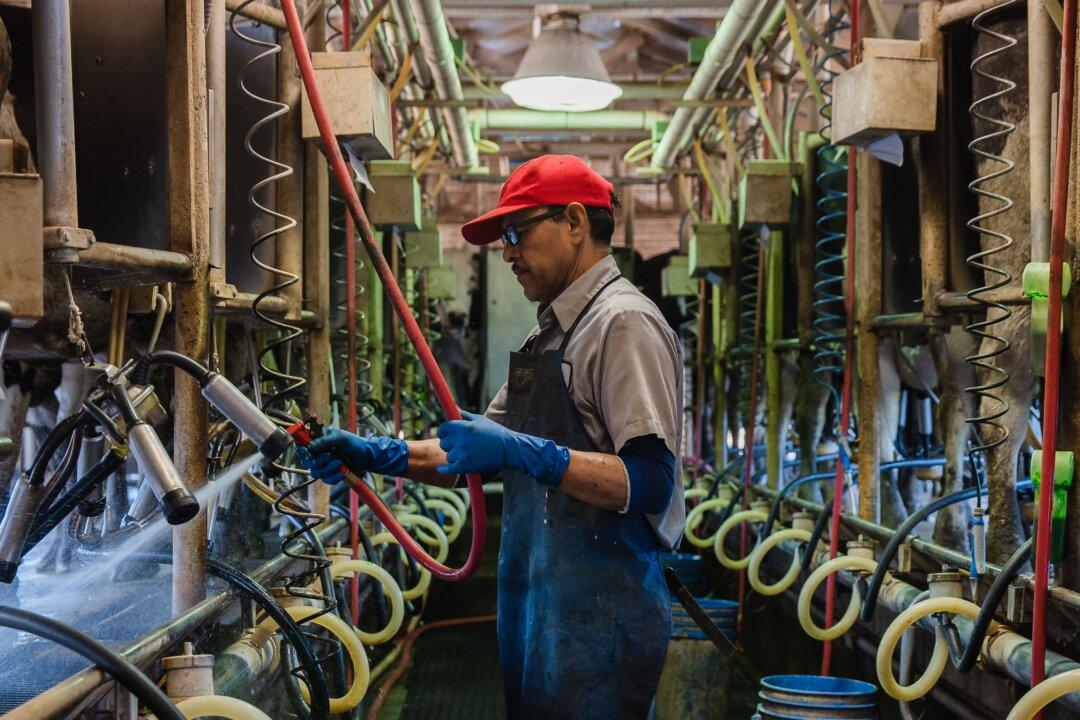California officials are investigating a potential third case of bird flu in humans, with the individual likely getting infected from cows, according to the California Department of Public Health (CDPH).
California Reports 3rd Possible Case of Human Bird Flu
All three cases involve people who were in contact with cows in the Central Valley region of California.

A worker milks cows at a dairy farm in California on April 16, 2020. Ariana Drehsler/AFP via Getty Images




